-
Car Reviews
- Car News
-
Car Comparisons
Latest comparisons
- Chasing Deals
The Mazda 3 X20 Astina is the only grade of this car to feature the brand’s revolutionary Skyactiv-X petrol engine – but can it really justify its $45,000 driveaway price?
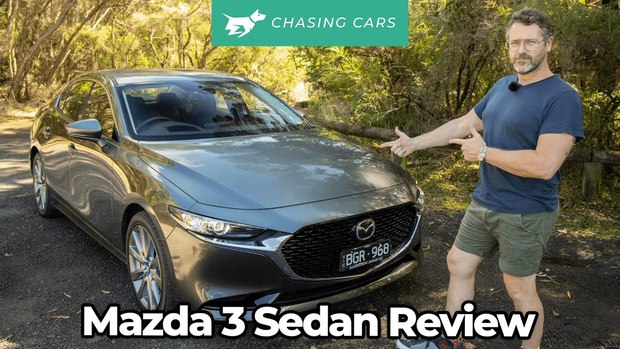
Shopping for a Mazda 3? I don’t blame you. While many small car – and small SUV – designs somehow manage to combine blandness with frightful surface details, the Three is a shining beacon of style purity. In hatch or sedan guise its beautiful, fluid design is reason enough to justify Mazda’s higher entry fee versus Hyundai i30, Kia Cerato or Toyota Corolla rivals.
But what about when that Mazda 3 hits $45,000 drive-away? Stretching the relationship a bit far, most would think. Similar money finds you in a warm or even hot hatch (if that’s your thing) but the Mazda 3 X20 Astina range-topper hopes instead to attract your dollars with its cutting-edge engine tech, promise of excellent fuel economy and luxurious high specification.
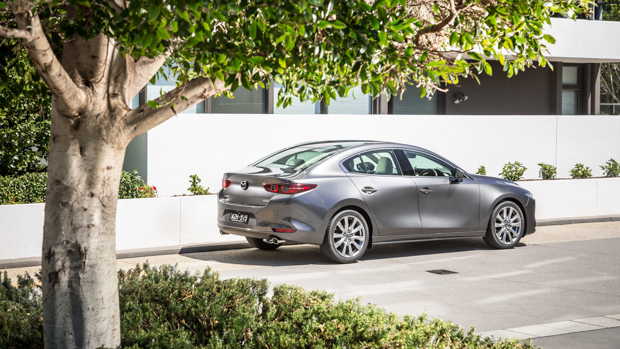
Key is the ‘X20’ bit. That signifies Mazda’s Skyactiv-X petrol compression ignition engine under its bonnet. We’ve covered the science behind this very smart piece of mechanical engineering numerous times, so let’s focus on pure numbers. After all, that’s what the vast majority of car buyers really care about.
You pay $3000 more for a 2.0-litre (very) mild hybrid Mazda 3 X20 Astina over a same-spec 2.5-litre Mazda 3 G25 Astina. The G25 has 139kW, 252Nm and weighs 1388kg with a six-speed auto gearbox. The X20 has 132kW, 224Nm and weighs over 50kg more, thanks to its extra hardware.
The win arrives with fuel economy. Official figures give the G25 6.5L/100km, the X20 5.5L/100km. A decent improvement, until you learn the latter needs pricier 95 RON jungle juice while the G25 makes do with cheapy 91.
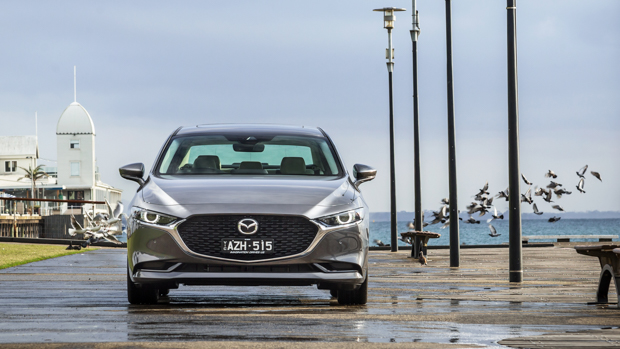
A pointless exercise then? Not quite. The Skyactiv-X engine does have a personality separating it from other Mazda 3 models, and quite simply, some buyers are drawn to cutting-edge engineering.
Not many though. Mazda’s sales figures for 2021 show 69 X20s have sold from a total of 4451. About 1.5%. And with only one-in-three Mazda 3 sales being sedans over hatchbacks, our test X20 four-door is quite the unicorn. So does it offer enough to play in the same price playground as an Audi A3 or Hyundai i30 N?
Smoothness personified. We all want different things from our cars, and if you fancy a fiery mongrel turbo motor for your $45k, grab that aforementioned i30N. The Mazda3 X20 proves its worth using serenity instead.
There’s a nice purr to the motor – certainly no vulgar diesel-type clattering as was feared when Mazda first touted this petrol unit as exploiting the benefits of diesel-like compression ignition. While there’s a reasonable torque hit from low down the rev range, there’s no satisfying surge as enjoyed with a turbo-diesel or small turbo-petrol motor.
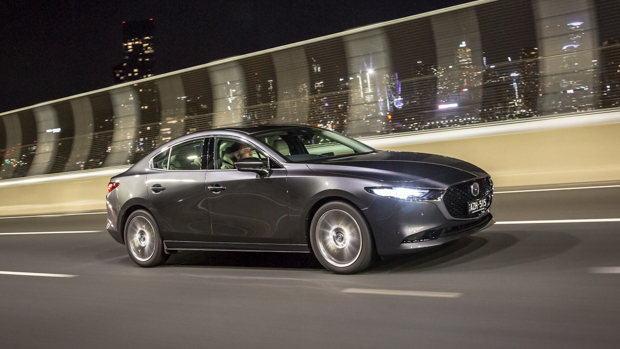
Conversely, there’s more eagerness as you climb through the rev range. On a decent back road, steering wheel paddles help keep the 2.0-litre in the singing spot. Throttle response trumps those forced-induction try-hards, and in Sport mode there’s just about enough to keep the keen driver interested on the power and soundtrack fronts.
But like every other Mazda3 on sale in Australia, this is not an engine to properly stir emotions. Horses for courses and all that, this X20 instead shines in town and on highways. Clever use of a tiny supercharger smooths the engine’s torque curve, while an integrated starter motor/generator with 24v battery (the mild hybrid bit of this engine) imperceptibly switches the engine off for fuel saving as you come to a stop. It’ll restart without you noticing too.
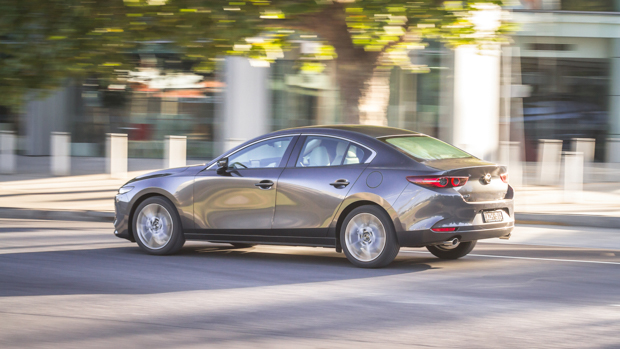
There may be a lot of science happening all around but the driver will barely realise. A good thing – it feels just like a normal Mazda3. And in this current generation, that means prestige-car rivalling cabin noise suppression and an excellence – in sedan form at least – at absorbing road imperfections. Older Mazda3s really struggled in these areas, but right now the model sits at the pointy end of the small car class.
While the safety systems – of which there are many – get disturbingly beepy at times, front and rear cross traffic alert, radar cruise control, blind spot monitor, lane keep assist, colour head-up display and Cruising and Traffic Support wrap you in cotton wool. Your driving position, leathery seating and uncluttered cockpit feel a cut above, and the conventional six-speed auto is a real smoothie. No whiny CVT or low-speed jerkiness dual clutch here – they simply wouldn’t be in keeping with the Three’s MO.
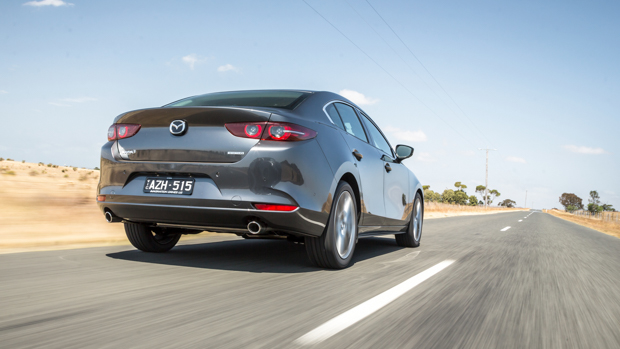
The steering’s light but precise, the handling solid. It may be the fact my test car was a sedan, or that the X20 is 50kg heavier than its G20/G25 stablemates, but it didn’t feel as nimble and quick to turn in on the same road I tested a G20 Mazda3 hatch. If you’re a city slicker, this won’t be an issue. To my mind, this X20 Sedan excels in town for comfort, quiet and driving ease.
Mentioning no names, you can throw fancy heated/ventilated seats, wireless phone charging and the like into car cabins and hope buyers in showrooms don’t notice the rest. The Mazda3’s the opposite. The bones are superb. A clean, beautifully-designed interior with touch points and dash top all soft plastics or leather giving a luxurious, classy feel.
In the back this grade scores rear vents and, being the sedan, spacious enough seating without the more claustrophobic feel found in the Mazda3 hatch with its over-sized C-pillars. The driver’s rear visibility is helped no end thanks to the sedan’s more conventional metalwork too.
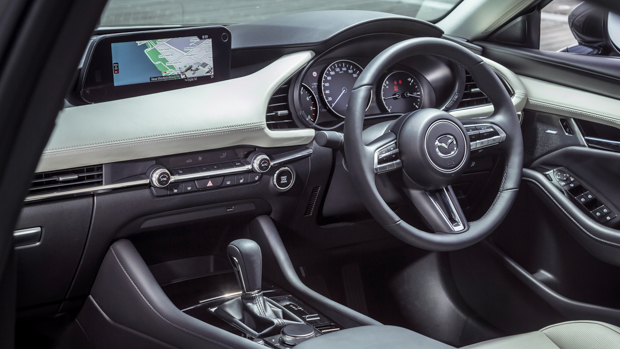
You get an 8.8-inch display (no touchscreen) running wired Apple CarPlay/Android Auto, navigation, DAB, Bose audio, seven-inch digital driver display, 360-degree parking camera and front and rear parking sensors. A sunroof is thrown in too, lifting the otherwise dark cabin in our test car. Pure White leather’s a no cost option, which would be my pick if not for messy kids in tow.
Certain items aren’t as easy to fit in a sedan’s boot next to the hatchback’s, but the four-door Mazda3 at least has a very long cargo space, good for 444L. The hatch’s is a stingier 295L.
Omissions? The driver’s seat is electric but not the passenger’s, ambient lighting would add a dash more flair, while no wireless phone charging feels a bit old hat in cars over $40k these days.
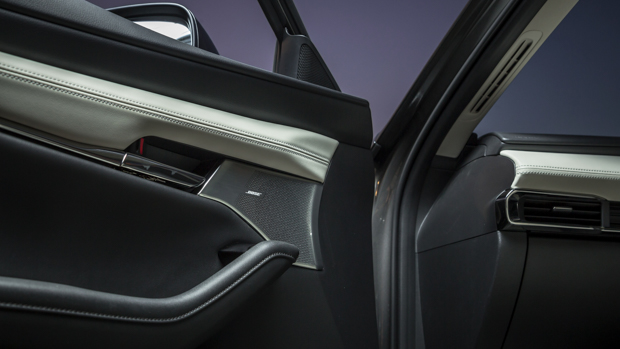
For all the X20 Skyactiv-X engine’s smarts and smoothness, Mazda really set out to make the internal combustion petrol engine more fuel efficient. Figures show this has been achieved versus its current naturally aspirated petrol engines, but, for me, it’s not enough.
My test over hundreds of kilometres and various road and driving types returned 6.7L/100km – and remember, this is with the required 95 RON fuel. I comfortably better this in my Volkswagen Golf 7.5 110TSI with its 1.4-litre turbo petrol (my long-term average sits at 5.6L/100km using 95 RON), while turbo-diesel or hybrid small cars are the true fuel misers. If it’s fuel bills you really care about, you’re best seeking out one of these.
Services are annual or every 10,000km, with the total for your first three being $1244 and five for $2153. Mazda offers an average-for-Australia five-year/unlimited kilometre warranty.
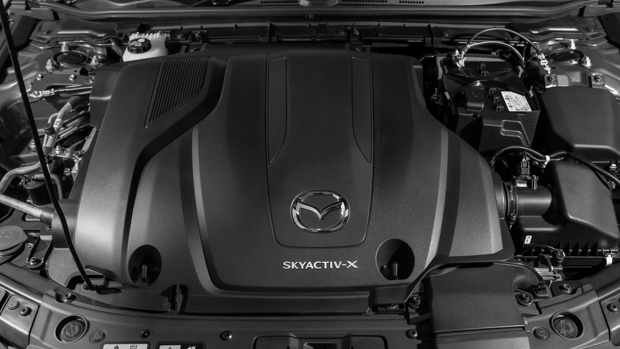
Ever since the current Mazda3 launched two years ago I’ve championed its looks, cabin quality, quiet drive and accomplished chassis. My sticking point has been its engine line-up feeling a dash underwhelming and too much a safe choice. The X20’s Skyactiv-X spices things up with incredible technology that bravely rethinks the way an internal combustion petrol engine works. Kudos is due, and it’s indeed a silky four-cylinder.
As both a performance fan and someone with deep interest in fuel saving – be it through electrification or otherwise – I can’t help feeling the Mazda3 range was instead crying out for a different type of radical. A dialled-up 2.5-litre turbo to mix it with hot hatch rivals, or to the other extreme, a bigger-batteried hybrid to properly challenge Toyota’s efforts.

I hugely respect Mazda engineers for persevering to improve the efficiency of petrol engines, but the rapid transition to electric cars will probably curtail any future development of the X20’s Skyactiv-X engine.
It will make the Mazda3 X20 Sedan a rare beast indeed. One for those who demand that point of difference. For everyone else, a Mazda3 G25 Astina and $3000 in your pocket makes more sense.
Variant tested X20 ASTINA M HYBRID
Key specs (as tested)
About Chasing cars
Chasing Cars reviews are 100% independent.
Because we are powered by Budget Direct Insurance, we don’t receive advertising or sales revenue from car manufacturers.
We’re truly independent – giving you Australia’s best car reviews.
The estimate provided does not take into account your personal circumstances but is intended to give a general indication of the cost of insurance, in order to obtain a complete quote, please visit www.budgetdirect.com.au. Estimate includes 15%^ online discount.
^Conditions Apply
Budget Direct Insurance arranged by Auto & General Services Pty Ltd ACN 003 617 909(AGS) AFSL 241 411, for and on behalf of the insurer, Auto & General Insurance Company Limited(ABN 42 111 586 353, AFSL 285 571).Because we don’t know your financial needs, we can’t advise you if this insurance will suit you. You should consider your needs and the Product Disclosure Statement before making a decision to buy insurance. Terms and conditions apply.
Indicative quote based on assumptions including postcode , 40 year old male with no offences, licence suspensions or claims in the last 5 years, a NCD Rating 1 and no younger drivers listed. White car, driven up to 10,000kms a year, unfinanced, with no modifications, factory options and/or non-standard accessories, private use only and garaged at night.
^Online Discounts Terms & Conditions
1. Discounts apply to the premium paid for a new Budget Direct Gold Comprehensive Car Insurance, Third Party Property Only or Third Party Property, Fire & Theft Insurance policy initiated online on or after 29 March 2017. Discounts do not apply to optional Roadside Assistance.
2. Discounts do not apply to any renewal offer of insurance.
3. Discounts only apply to the insurance portion of the premium. Discounts are applied before government charges, taxes, levies and fees, including instalment processing fees (as applicable). The full extent of discounts may therefore be impacted.
4. We reserve the right to change the offer without notice.